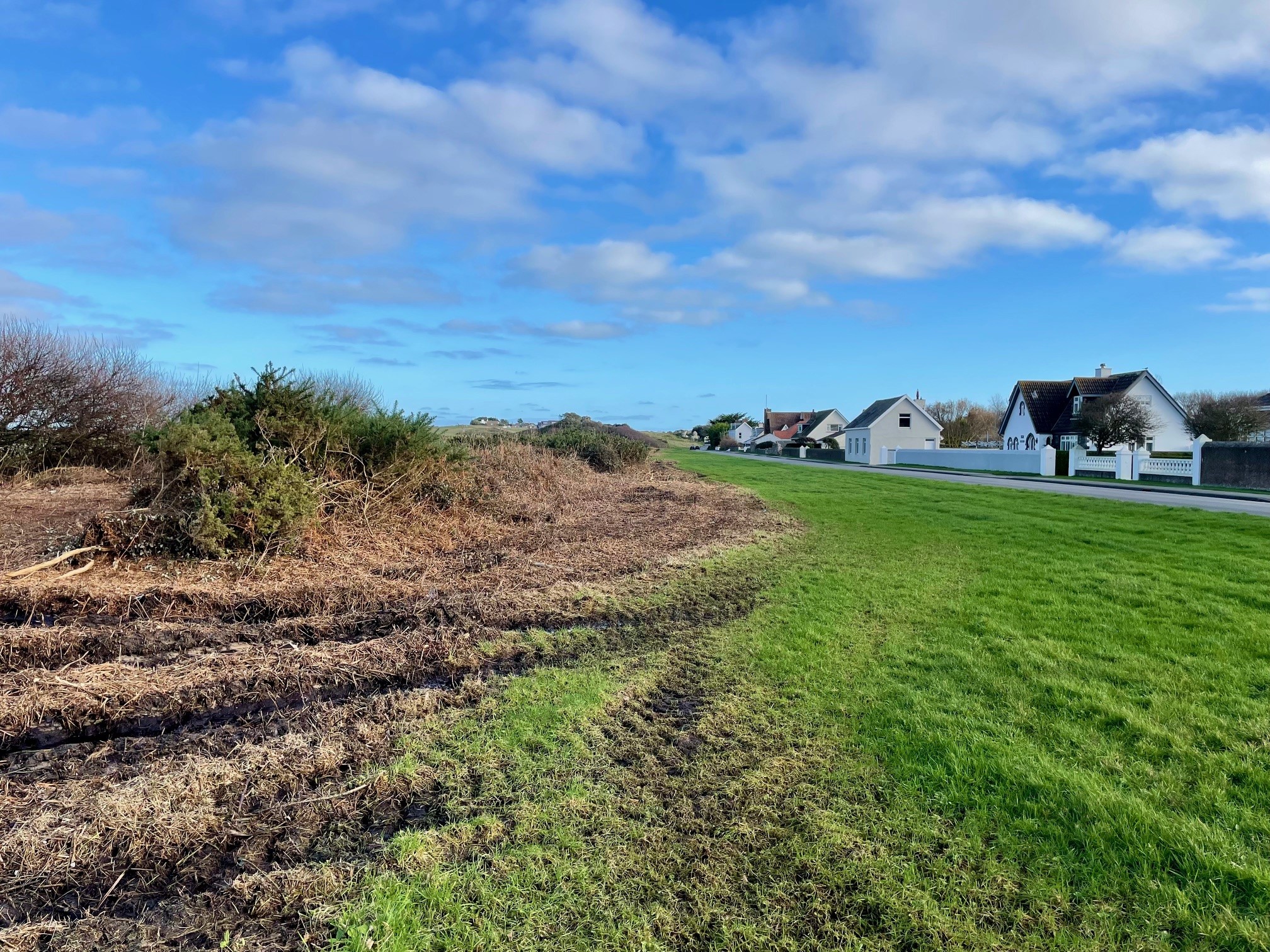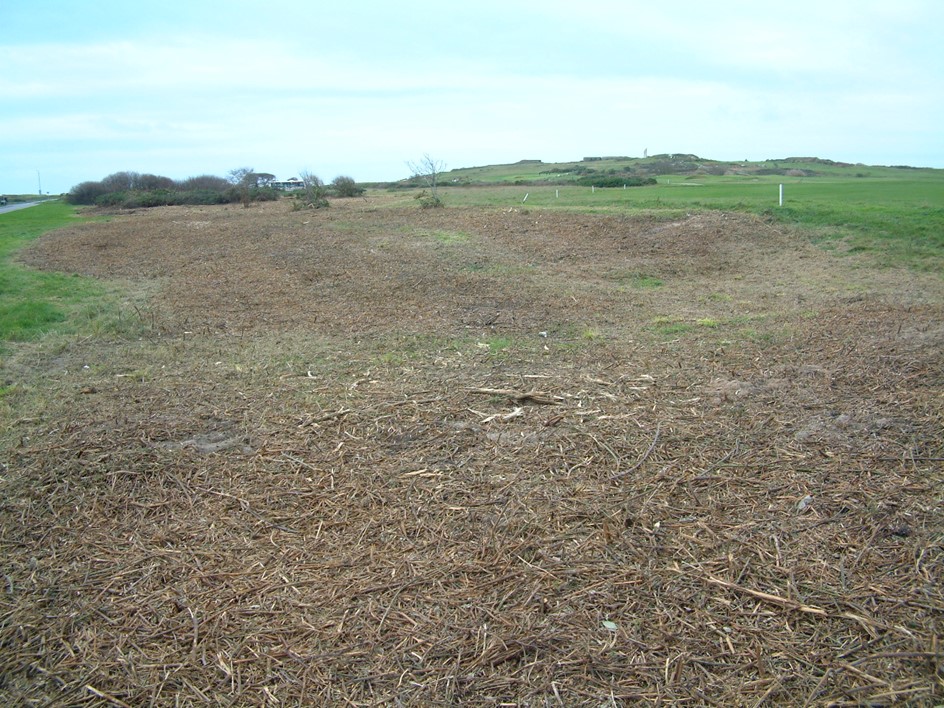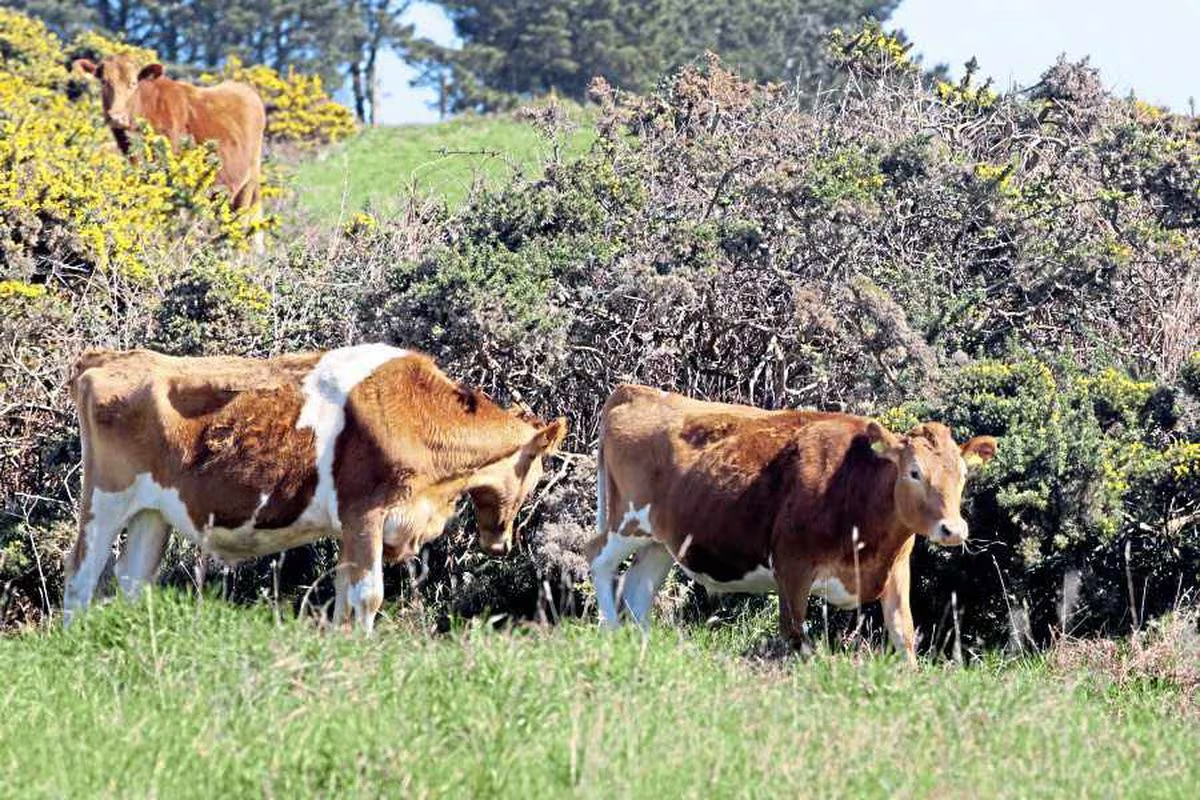Cutting gorse 'essential part of Commons management'
Mon 18 Dec 2023


The area of old gorse recently cleared by the Golf Course Management.
A gorse management programme is in place to clear a number of areas that have been overgrown for many years, VCC President Rosemary Henry said. "Left uncontrolled, tall leggy gorse would eventually claim the entire common," she said. Well known land marks such as the Rocque Balan were gradually being buried completely by the strongly-growing evergreen shrub.
After about seven to 10 years the gorse stands on the Common start to lose their compactness and the plants then begin to degenerate, losing their value for wildlife. The gaps also enable invasive plants like bramble to take hold and these are not native heathland plants or as attractive to wildlife.
Ms Henry, who is also Dean of the Vale Douzaine, said that under the management plan a significant proportion of existing gorse remains but straggly old specimens need to be cut down to allow fresh new growth, while certain areas which were once grassland can be re-established.
"The cleared areas will look desolate until new growth appears and, in the areas to be kept clear of any re-growth, indigenous plants can re-appear having been dormant under the gorse for so long," she said.
Balance
"It is important to keep a balance between the gorse and all the other plants on the Commons as the area’s biodiversity is delicate. The cutting programme needs to be in the winter before birds nest and while, in an ideal world, it would be desirable to cut the gorse by hand the time factor and necessary manpower required renders this impractical, as would the labour cost," she explained.
"As custodians of the largest recreational area in the Island, the Vale Commons Council works tirelessly to keep the Common as natural as possible while at the same time accommodating the increasing demands made on it by the thousands of people using the area," she said.
Previously, in the distant past, cows and goats grazed the Commons keeping the gorse and bracken under control but with the decline in the number of animals pastured there the gorse has grown unchecked, covering areas once open for the public to enjoy.
As a result, the Council employs groundsmen and outside contractors to do the jobs the animals once did and which also explains why the VCC welcomes La Societe Guernesiaise's conservation herd on the Common.
Project manager Julia Henney said it was all about conserving the land and maintaining and enhancing wildlife.
'If land isn't grazed the grass becomes tall, rank and scrubby and the likes of bramble and gorse will soon dominate,' she said when the first steers for years returned to graze on the Common in 2017 (pictured below).

Gorse (Ulex europaeus) is widespread across the UK and Guernsey in a variety of habitats, including woodland, under-grazed grassland, heaths and coastal habitats. Several bird species take shelter in gorse bushes as they are so dense and provide great protection during harsh weather. Gorse flowers are a good source of nectar for bees and butterflies.

